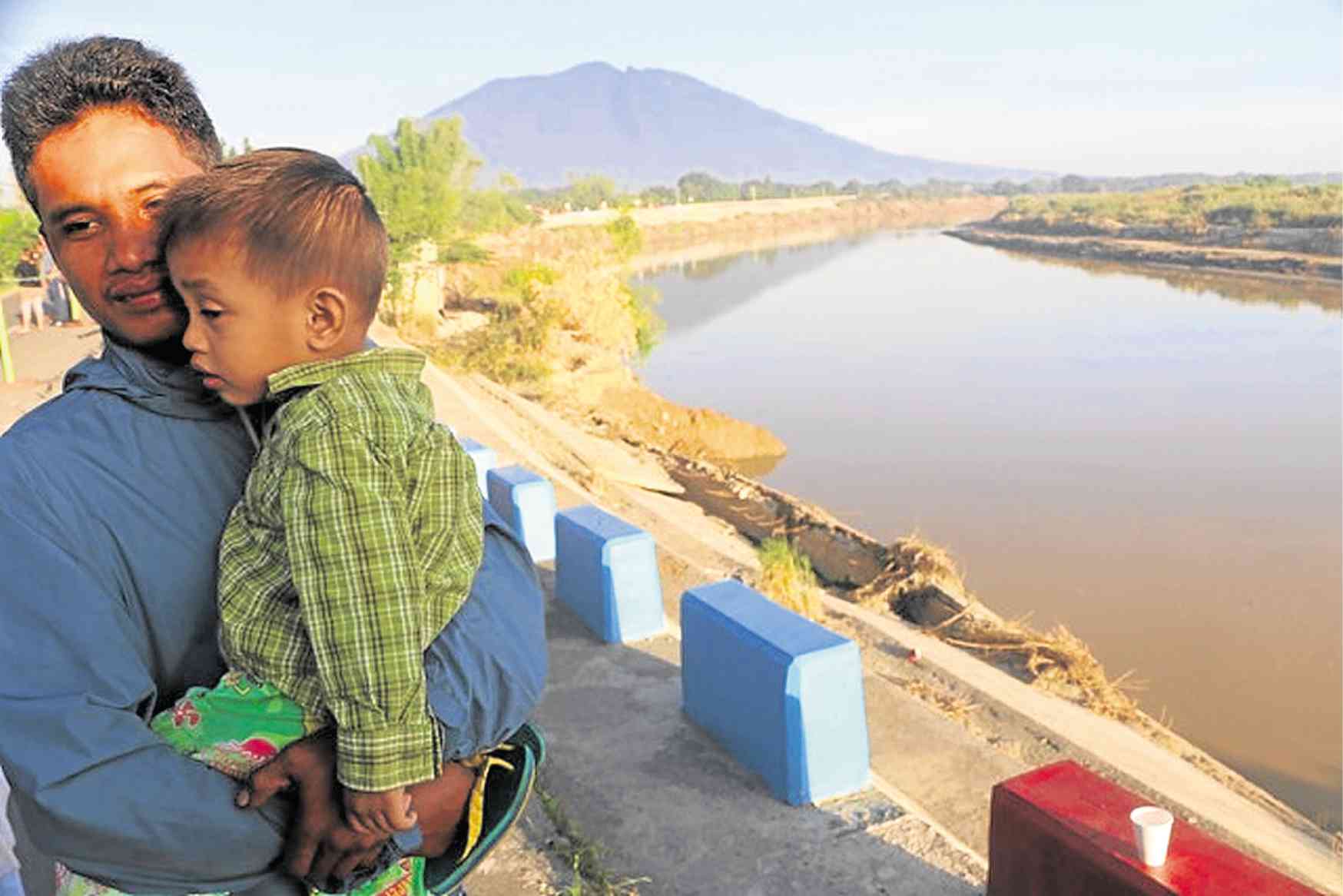Pampanga River polluters: 56,000 houses, firms

RIVER POLLUTION Thousands of houses and commercial establishments have turned the Pampanga River into a dump, contributing to the pollution of Manila Bay, where the waterway drains. —TONETTE OREJAS
CITY OF SAN FERNANDO — More than 56,000 houses and business establishments in Central Luzon have been polluting the Pampanga River that drains to Manila Bay.
The Department of the Interior and Local Government (DILG) and local governments found that 49,179 houses, 7,020 commercial establishments and 102 factories near the 264-kilometer-long river did not have proper sewage collection and treatment facilities.
In a report released at the Inquirer’s request to check the agency’s compliance with a 2018 Supreme Court order to agencies to clean up the Manila Bay, the DILG said it had helped 20 local governments in Nueva Ecija, 14 in Bulacan, 14 in Pampanga, nine in Bataan and three in Tarlac pass septage and sewage management ordinances.
At least 24 towns and cities have similar local laws proposed to their legislative councils.
Difficult task
Article continues after this advertisementThe DILG said it helped local governments finalize their 10-year solid waste management plans, with 50 of these approved and 40 pending with the Environmental Management Bureau.
Article continues after this advertisementRelocating households away from riverbanks appeared to be a more difficult task for both local governments and housing agencies.
There were also local shelter plans but these did not cite accomplishments, according to the DILG.
In 2018, the Clean Water Act of 2004 (Republic Act No. 9275) had not been complied with by highly urbanized cities outside of Metro Manila, a report to the Senate environment committee showed.
This was despite the national sewage and septage management program drafted by the Department of Public Works and Highways (DPWH), and the P650-million subsidy for sewage projects.
Subsidy increase
Last year, the National Economic and Development Authority increased the subsidy to such projects to 50 percent each.
A DPWH study showed that the country had invested very little in proper sewage collection and treatment.
“More than 20 million Filipinos do not have access to improved sanitation. Many who have toilets do not have septic tanks. Many septic tanks have open bottoms and are not regularly desludged,” the study noted.
Moreover, septage removed from septic tanks is often not properly treated, it said.
“The effects of this neglect include economic losses exceeding P78 billion per year, 55 deaths per day, and damage to ecosystems and biodiversity,” it said. —Tonette Orejas